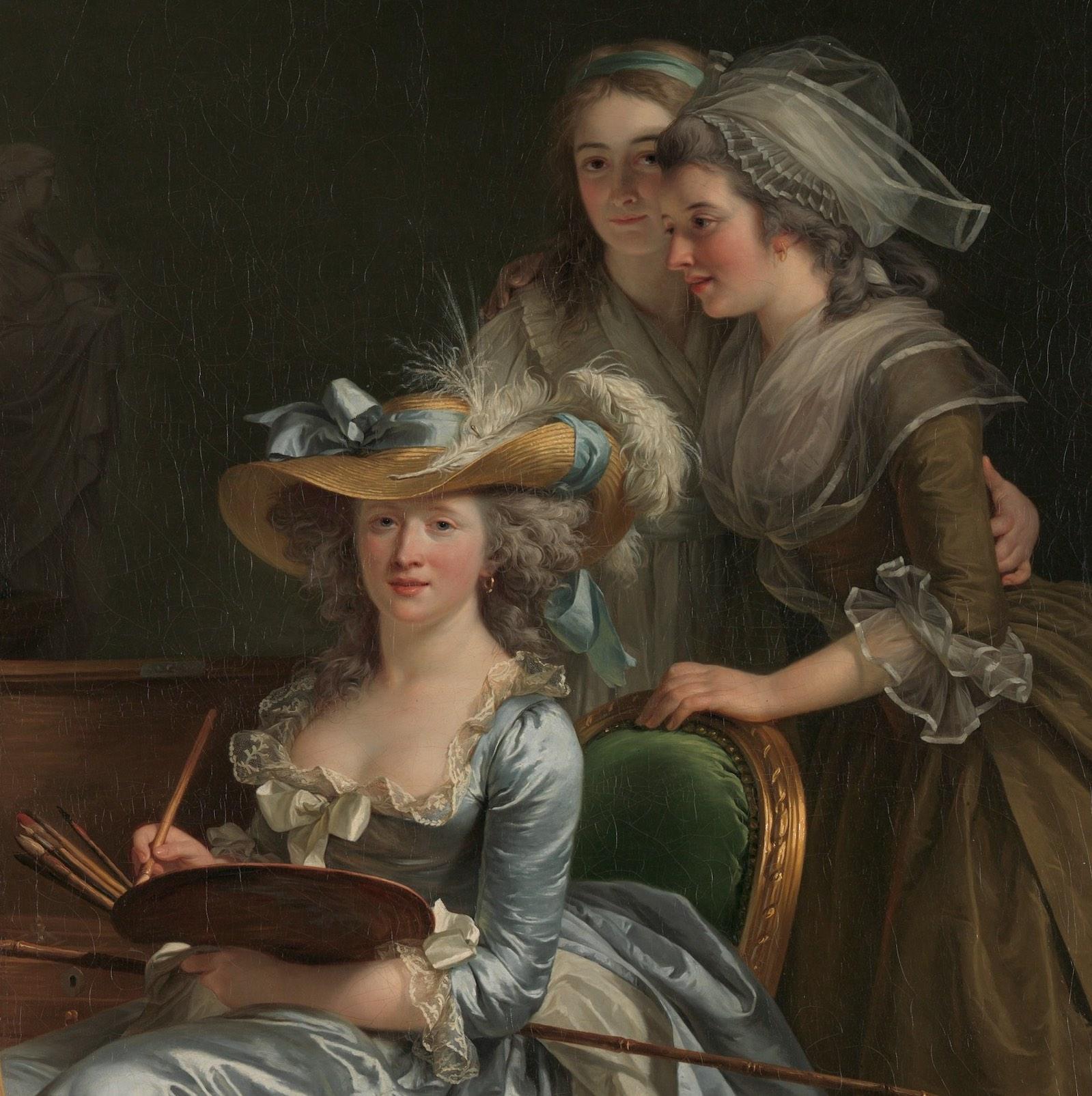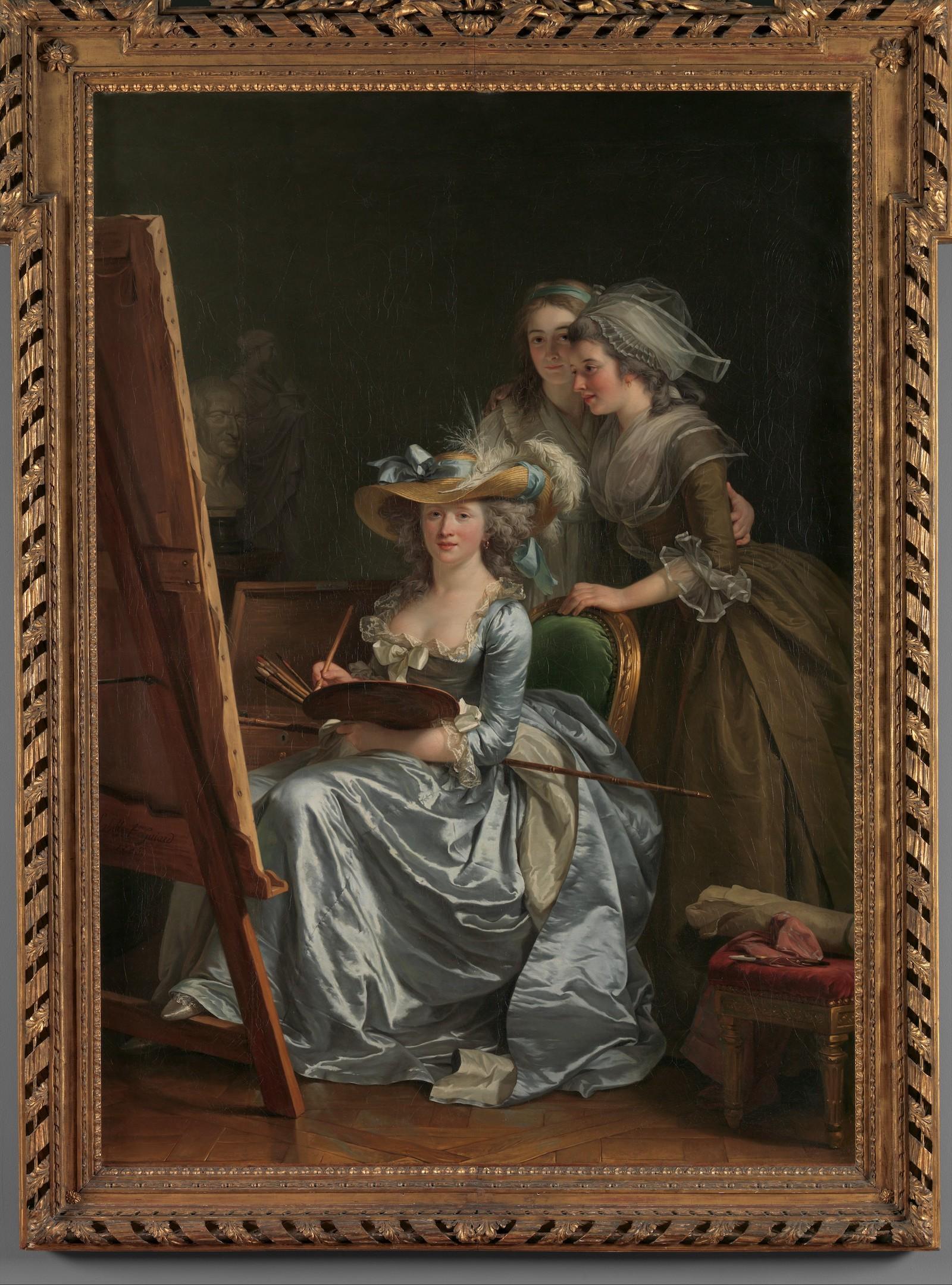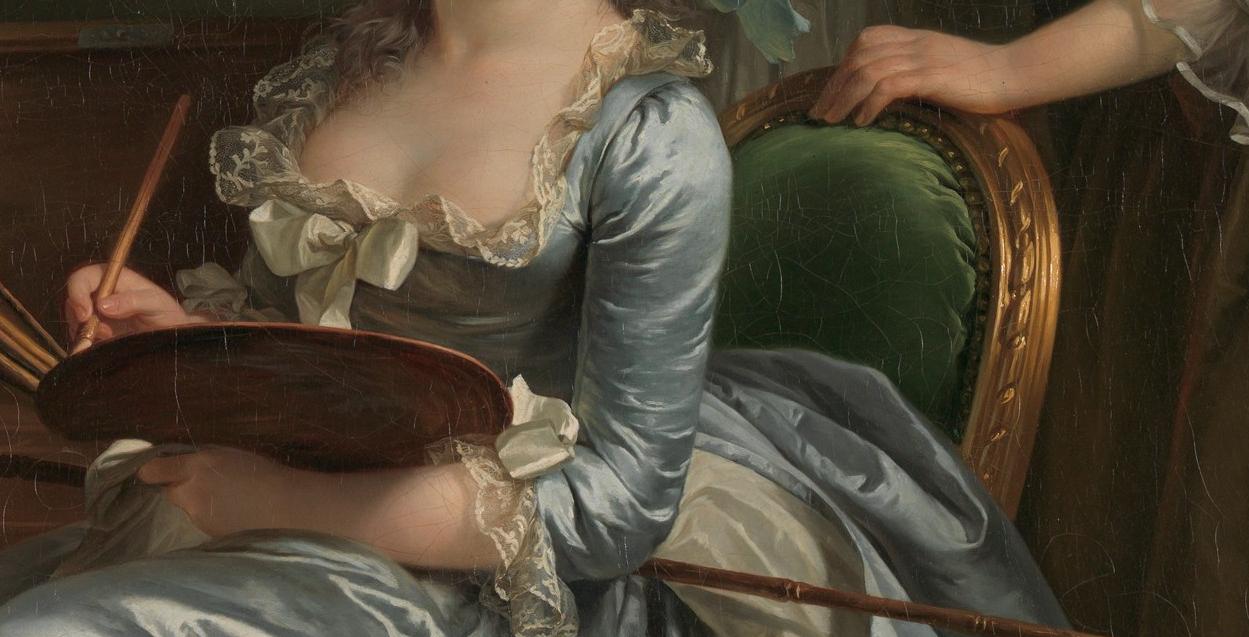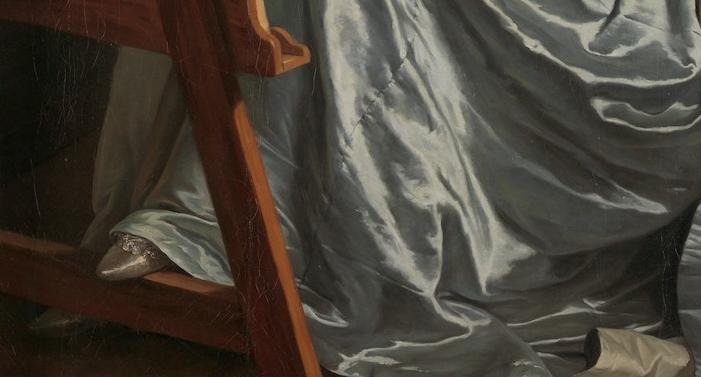All of those seemingly glamorous designs incorporated in the painting were Labille-Guiard’s way of showing that in her line of work, women had to look more glamorous, less haggard, than men doing the same job.
This self-portrait, exhibited in Paris in 1895, came with a caption from an unnamed male art critic noting that “this woman” often had critics assume the work had been painted by a man, because no woman would have been capable of this quality of painting.
Upon being told the painter was female, men were shocked. The unknown male critic paraphrased the artist’s frustration: "as if my sex were to be eternally condemned to mediocrity."
Consequently, she felt compelled to portray herself as unthreatening, what we today would call "put together." She purposefully parodied prejudice by asking her companions to wear head decorations indoors and wearing a fancy hat herself, uncommon indoors at the time.
It was a defiant project.































